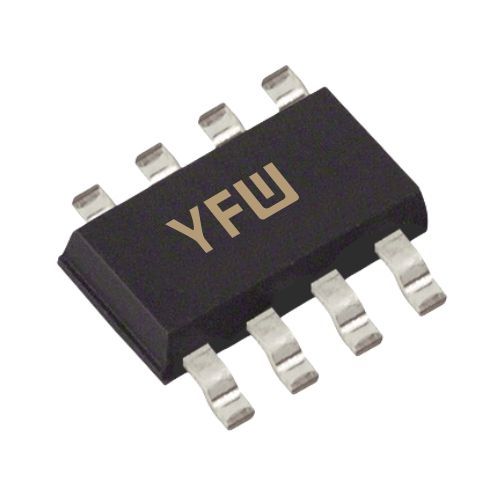Transistors, the workhorses of modern electronics, feature a three-layer structure (either NPN or PNP for BJTs) with two PN junctions. Their operation hinges on
current control: a small base current in BJTs modulates a much larger collector-emitter current, enabling signal amplification. For field-effect transistors (FETs), a voltage applied to the gate creates an electric field that controls the conductivity between the drain and source, offering high input impedance and low power consumption. This linear, proportional response to input signals makes transistors ideal for tasks requiring nuanced adjustments, such as amplifying audio signals in speakers or regulating voltage in low-power
DC-DC converters. Their ability to switch rapidly and efficiently also drives digital circuits, from microprocessors in smartphones to the logic gates that underpin computational systems.
Thyristors, or silicon-controlled rectifiers (SCRs), adopt a four-layer, three-PN-junction structure, leading to a fundamentally different behavior: latching. They have three terminals—anode, cathode, and gate—but unlike transistors, they operate in a binary "on/off" state once activated. A brief pulse at the gate triggers the thyristor to conduct current from anode to cathode, and it remains conducting until the anode current drops below a threshold (holding current) or the voltage reverses. This lack of continuous control makes them unsuitable for linear amplification but perfect for scenarios demanding robust, high-power switching.
Transistors shine in applications requiring analog precision or low-power digital switching. In audio amplifiers, BJTs amplify weak signals from microphones or sensors into powerful outputs for speakers, leveraging their current gain (β). MOSFETs, a type of FET, dominate in power electronics like LED drivers, where their low on-resistance minimizes energy loss during voltage conversion. In digital circuits, transistors act as switches in logic gates, where millions of them in microprocessors execute binary operations at gigahertz speeds. Their versatility lies in continuous control—the output can be finely tuned between fully on and off, making them indispensable for signal processing and low-power systems.
Thyristors, by contrast, rule in high-power, high-voltage environments. In industrial motor drives, they regulate AC power by controlling the conduction angle, adjusting motor speed without cumbersome mechanical parts. Dimmer switches in lighting systems rely on thyristors to manage large currents efficiently, while in renewable energy, solar inverters use them to convert DC from solar panels to AC for the grid, handling surge currents and voltage spikes with reliability. Their latching behavior is a strategic advantage here: once triggered, they require no further gate power, reducing control circuit complexity and enhancing ruggedness in harsh environments like industrial machinery or electric vehicle chargers.
The core distinction lies in control mechanism and operation mode. Transistors offer analog flexibility: their output scales with the input, enabling precise modulation. This makes them critical for applications like audio processing, where subtle signal adjustments are essential, or in 稳压器 (voltage regulators, but here described as "voltage-stabilizing circuits") that maintain constant output despite input fluctuations. Thyristors, however, provide digital-like switching: they’re either fully off or fully on, with the gate signal serving as a one-time trigger. This makes them unsuitable for delicate signal processing but ideal for tasks like AC power control, rectification in battery chargers, or overvoltage protection in power grids, where their ability to handle kilovolts and kiloamperes surpasses most transistors.
When designing a circuit, ask: Does the application need fine-grained control or robust power switching? For low-power, signal-level tasks—amplifying, oscillating, or switching at high frequencies—transistors are the go-to. For high-power systems—managing mains voltage, driving inductive loads, or converting energy in renewable setups—thyristors reign supreme. Their complementary strengths, despite similar packaging, highlight the importance of looking beyond appearances in electronics: function, not form, dictates a component’s true purpose.
In summary, while thyristors and transistors may share a visual identity, their operational philosophies and applications are worlds apart. Transistors thrive in the realm of precision and nuance, while thyristors excel in the domain of power and permanence once activated. Understanding this divide ensures optimal circuit design, where each component is leveraged for its unique strengths—proof that in electronics, as in life, it’s what’s inside that truly matters
